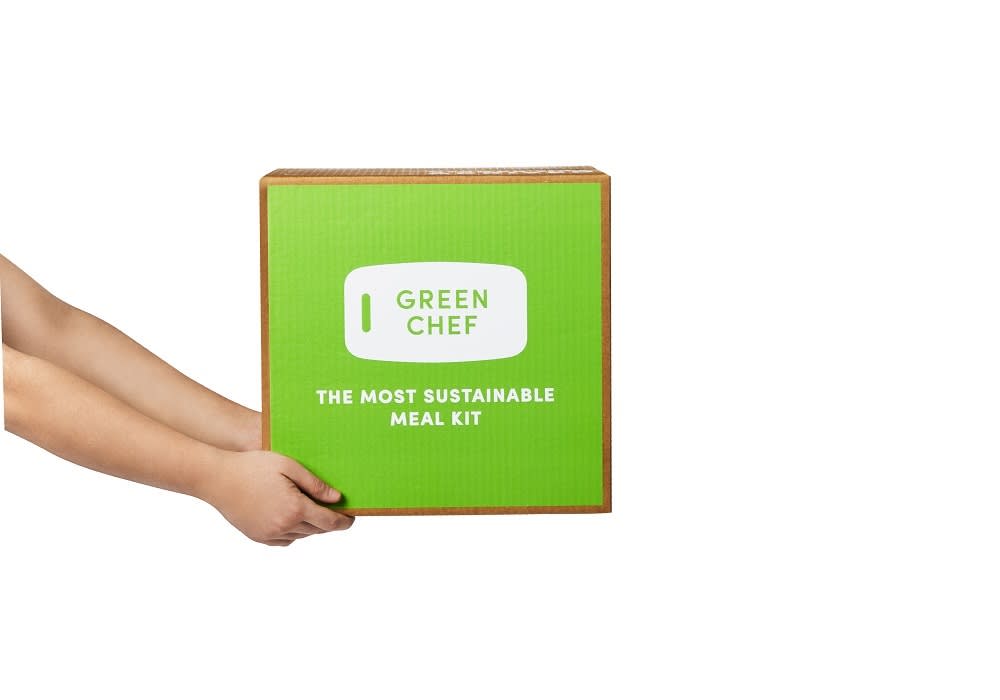
Gluten-Free Alternatives & Ingredients Swap Guide
Gluten-Free Alternatives & Ingredients Swap Guide
What Can I Substitute for Gluten-Containing Ingredients?
1% of the world's population and around 2 million people in the United States alone suffer from Celiac disease or a gluten allergy. There are even a larger amount of people that haven't been diagnosed yet. Fortunately, for those that suffer from a gluten allergy, there are more and more gluten-free alternatives to almost every food, product, or ingredient. Today you'll learn what you can swap for the following ingredients and when is the best time to use them:
- Pasta/Noodles
- Grains
- Wheat/Flour
- Breadcrumbs
- Tortillas
- Pizza crust
- Soy sauce
Substitutes for Pasta/Noodles Containing Gluten
- Rice noodles: These are perfect to use in Asian dishes such as Pad Thai, drunken noodles, or stir fry. These quick-cooking noodles come in sizes ranging from thin (think angel hair) to wider sizes (for pad see ew).
- 100% buckwheat noodles: Known as soba, these typically contain a mix of wheat and buckwheat flour. If you can find ones made with 100% buckwheat, they are expensive but well worth it for Japanese dishes.
- Grain-based pasta: You'll find grain-based pasta made from corn, quinoa, or rice. The texture is a close match to whole wheat pasta and contains the same healthy carbs. Prepare for longer cooking times when using this gluten-free substitute.
- Legume-based pasta: These noodles are made of ingredients like chickpeas and lentils. They have a dense texture, nutty flavor, and high protein and nutrient levels. They fall apart easily compared to other alternatives, but cook much faster
- Veggie noodles: You can use a spiralizer on vegetables like zucchini, sweet potatoes, and carrots to make noodle-like spirals. They are a low-carb alternative to pasta and a great way to get more veggies in your diet. You can sauté them till browned for some extra flavor.
Substitutes for Grains Containing Gluten
- Buckwheat: Sold as groats, which are the hulled seeds of the buckwheat plant, these seeds have a nutty flavor and are popular in Eastern European cuisine. Use it in place of oats for breakfast or make it into a healthy side dish when combined with roasted veggies.
- Millet: This is a small grain similar to quinoa and is the main component in birdseed. It has a sweet flavor and a rice-like texture, making it perfect in a soup or casserole.
- Quinoa: Quinoa is one of the few grains that is a complete protein, meaning it contains all of the essential amino acids. It has a light and fluffy texture and a nutty flavor. Try using it as a base in a salad or grain bowl.
- Cauliflower rice: If you get tired of rice or are looking for a lower-carb version, try "rice" made from cauliflower. It is almost identical to rice and great in a stir fry.
Substitutes for Wheat/Flour
- Almond flour: It's moister than normal flour due to its higher fat content, and great for lighter baked goods such as cookies, cakes, scones, and of course, macarons. Almond flour doesn't have the same binding ability as normal flour, rises less, and could have a gritty texture in cakes.
- Amaranth flour: A very dense flour, it shouldn't be substituted for more than 25% of the flour a recipe calls for. It works best in savory recipes like bread and pizza crust due to its earthy flavor and shines as a thickener for soups and gravies.
- Buckwheat flour: This flour is common in Eastern European cooking. It has a strong nutty flavor and plenty of nutrients. It is traditionally used to make denser foods such as pancakes, galettes, noodles, and bread.
- Cassava flour: This is one of the closest matches to wheat flour in both taste and texture. All-around great substitute for bread, cakes, and cookies and is a wonderful thickener. Cassava flour also absorbs more water than normal flour.
- Chickpea flour: A fibrous, dense flour, it is traditionally used in Indian cooking. Try it as a binder for fritters, a thickener for soups, or turn it into a batter and make pancakes or waffles.
- Coconut flour: Use this for up to 25% of the required flour in a recipe. It has a great ability to retain moisture, keeping your baked goods moist, but you'll have to add a lot more liquids to your mix. Coconut flour has a definite coconut taste, so be sure you like the flavor before using it.
- Cornmeal: It's a lot denser than normal flour, so it's best used in recipes like cornbread, grits, or polenta, or as a breading. If you do need to substitute it directly for flour, do it by weight instead of by volume.
- Oat flour: Great for adding texture to baked goods, oat flour is higher in fiber, nutrients, and protein. This nutty-flavored flour is best used in a blend because the texture can become gummy if the liquid ratios are even slightly off.
- One-to-one flour mix: This is a mix of multiple gluten-free flours paired with binders to mimic how flour acts when it is used in baked goods. It's the quickest option for an equal substitute in non-yeasted baked goods.
- Rice flour: A flour that comes in both brown and white varieties. Makes a very sticky batter on its own, so is best used in a blend. Fits well into most baked goods with its lighter texture.
- Sorghum flour: It has a sweet flavor, making it ideal for cakes, cookies, and other sweet treats. It's similar in texture to wheat flour, but It shouldn't account for more than 30% of the flour a recipe calls for.
- Tapioca flour: Use a little in flour blends for a slight rise, otherwise it's susceptible to a gummy texture. This is a spectacular thickening agent, makes a crispy crust for breaded foods, and aids in browning baked goods.
- Teff flour: This is primarily used to make the traditional Ethiopian injera pancake. Can also account for up to 25% of a flour blend in cookies, muffins, and pancakes.

Can You Substitute Gluten-Free Flour in Any Recipe?
There are certain times you can just substitute gluten-free flour for regular flour without a thought. In basic uses like a flour coating or as a thickener you can easily use most types of gluten-free flour. If you're baking bread or anything yeasted, you could end up with a flat piece of cooked dough if you try to do a straight substitution.
Another thing to consider is if you're using one of the handy one-to-one gluten-free flour substitute blends, they are designed specifically for this purpose. Otherwise, you need to find recipes tailored to the specific gluten-free flour substitute you're using. Each type of flour substitute reacts in its own way when baked because it has its own flavor, texture, and liquid absorption rate. Another important tip to consider is that you should always measure by weight instead of volume since a lot of substitute flours have different densities.
Substitutes for Breadcrumbs
- Gluten-free breadcrumbs: The closest thing you'll find to a normal breadcrumb. They are larger than Italian breadcrumbs and come seasoned or unseasoned. Perfect for breaded and fried foods and the best option for use in meatballs or loaves.
- Chia seeds: This makes more of a crunchy breading, depending on if you grind the chia seeds or not. Works best as a breading.
- Chickpea crumbs: Grind up dried chickpeas for this high-protein breadcrumb alternative.
- Flax meal: Crunchy and nutrient-packed, it's best used as a breadcrumb replacement in recipes like meatballs.
- Ground pepitas or nuts: Ground seeds or nuts act better as a coating compared to putting them inside a dish.
Substitutes for Flour Tortillas
- Corn tortillas: Most tacos are already made with these, so you won't have to change a thing!
- Cassava-flour tortillas: The closest alternative to a flour tortilla you can find. You'll barely be able to tell the difference.
- Coconut-flour tortillas: A soft, fluffy, and flexible alternative to flour tortillas.
- Spinach tortillas: These wraps add an extra serving of veggies along with some extra protein.
- Lettuce or cabbage wraps: Quick and easy low-carb swap, ideal for Korean or Vietnamese lettuce wraps.
Substitutes for Pizza Crust
- Gluten-free pizza crust: These crusts use gluten-free flour blends in their manufacturing. The thin versions have a cracker-like texture, while the thicker Sicilian versions have a nice doughy texture.
- Cauliflower crust: This low-carb alternative has a slight cauliflower taste but turns into a thin, crispy crust when baked.
- Veggie bases: Use sliced Italian eggplants or Portobello mushroom caps as the base and top with pizza toppings.
- Zucchini boats: You can hollow out a zucchini and fill it with all of your favorite pizza toppings. It's both a low-carb and healthy alternative to a crust.
Substitutes for Soy Sauce
- Coconut aminos: Made from the sap of coconut trees, coconut aminos are free from soy and wheat. They have a thinner consistency and contain less salt than soy sauce.
- Tamari: Brewed only from soybeans, this soy sauce substitute is thicker and darker in color, but tastes almost identical.

Let Green Chef Help You on Your Gluten-Free Journey
Want to make maintaining your gluten-free diet even easier? Let us do the shopping. Green Chef offers a gluten-free meal plan with a selection of delicious gluten-free recipes, delivered right to your door. Not only do we take the guesswork out of meal planning, but we're also committed to the freshest, tastiest ingredients. We make sticking to your gluten-free diet even easier!